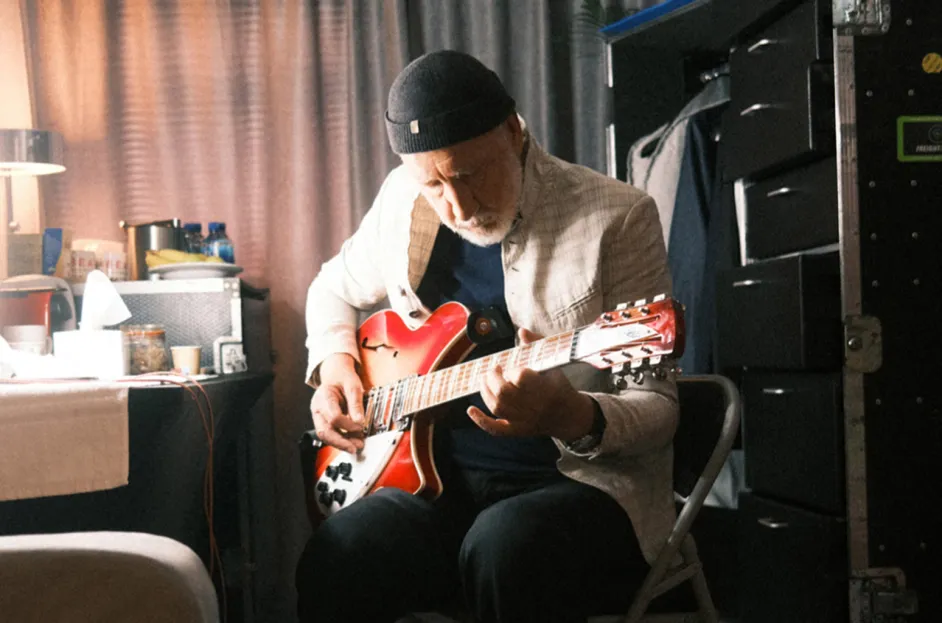The long-abandoned follow-up to “Tommy” that eluded the guitarist/songwriter for 50 years will finally see the light on Dec. 19.
“I’d gone back to it a few times and tried to get it to make sense and several times I’ve worked with other creative people, producers and writers who, in a sense, tried to ‘fix’ what they thought was wrong with it,” Townshend tells Billboard in a Zoom call from his London study. “But in the case of this graphic novel what happened is people who trusted the original idea and used those [original scripts I wrote in 1971 and a 1978 revision] to create the bulk of the story.”
Those people include the graphic novel’s authors, James Harvey (Doom Patrol) and David Hine (Spider-Man Noir), as well as illustrator Max Prentis, with lettering by Micah Myers and ink by Mick Gray. A limited-edition run of 1,000 copies of the project — which is being released in a square, vinyl-sized box — signed by Townshend and Who singer Roger Daltrey, will be released by Tower Records on Jan. 20 and Rockbox Studios (pre-order here), with standard and deluxe versions coming from Rockbox and Image Comics on Dec. 19.
The bulk of the original songs Townshend wrote for Lifehouse ended up on The Who’s 1971 album, Who’s Next, including such iconic tracks as “Behind Blue Eyes,” “Won’t Get Fooled Again” and the song that provides the beating human heart of the graphic novel, “Baba O’Riley.”
Though the story appears to predict such future technology as AI, music streaming and attempts by despotic dictators to control what we see and hear, Townshend says he doesn’t see it that way. “The writers took the original script at face value and where it was a bit weak — or fantastic or beyond sci-fi — [and] they’ve made it mischievous and amusing and colorful and crazy,” he says of the brisk pacing and jump-off-the-page illustrations. Indeed, the creative team bring the story to vivid life with anime-style explosions, gripping drama and a story that Townshend believes is much easier to follow than his original take, which he says was “overloaded” and “overcooked” with too many ideas in an attempt to catch the Tommy fire one more time.
That original kernel of a story was inspired by the two north stars Townshend says have always stoked his creative machinery: the time he spent with his abusive grandmother as a child following his parent’s split — which made him retreat into a world of fantasy and imagination — and the inspiration he took from attendin art school in his early teens.
It was there that he learned about the functions
While readers might spot modern parallels to a few of the more outrageous characters, Townshend says they are all fabrications — with the exception of the nefarious person who controls The Grid, Jumbo 7. He says in the original script, Jumbo was a sound tech/roadie loosely based on Thunderclap Newman. “He first introduced me to recording from tape-machine-to-tape-machine and he was a great model of a crazy guy who invents ways to subvert the technological grid and take it over for a concert,” he says of the keyboardist of the eponymous group best known for the 1969 hit “Something in the Air.”
For Townshend, the central conceit of a strong-arm ruler outlawing music feels as fresh today as it did in the 1970s. “That was a testament to the force of modern music as an irritant against organized political factions who wish to use it for their f–king rallies or censor it for their purposes,” he says. “Bringing people together to listen to music can appear to the closed minds of autocratic and theocratic governments to be dangerous.”
Well acquainted with such pushback from the powers-that-be to songs of youthful rebellion (see “My Generation”), Townshend says the graphic novel is really the “ultimate reflection of the individual and their individual loving soul.” As for the idea in the book of creating a “One Note” that serves as a musical lifeline composed of the heartbeats and brainwaves of citizens — a noble, but perhaps also slightly ominous goal — Townshend says he sees it as a kind of “poetic meme.”
“The idea is that we all like different stuff, we all live different lives, but we are all human and we come from somewhere, which, when we boil it down to quantum physics, we’re all made of the same stuff that produces our consciousness and that’s what the Lifehouse story is about,” he says. “It’s about losing the individual ego trapped in our consciousness in return for finding a universal consciousness.”
And while Lifehouse ropes in mind control, artificial universes and the ultimate technological search for the music of the soul, when you boil it down, Townshend says it’s really the most basic, elemental story ever told. “If you grasp the idea of incarnation, karma and consciousness as being a big ocean in which we are all little drops,” he says. “When we try to get together you lose yourself in the ocean at the expense of for a bigger, grander, more universal [notion].”
When asked if he can finally put Lifehouse to rest now that the graphic novel has presented his knotty tale in a fashion that seems to elate him, Townshend is predictably restless. “The story is complete,” he says confidently, before adding a tease that the modern streaming age might provide yet another chapter to the story they said couldn’t be told. “But there are film people already interested in it as a series, or an animated movie.”
Check out an image from Lifehouse below.

of early computers from IBM, as well as the first wave or analog synthesizers. “I got myself a couple of big synths and realized one of my missions I wanted to achieve with Lifehouse was to get some of the audience to be part of a real experiment with music in which they provided data through feelings, emotions, case studies and counseling sessions,” he says of the ambitious first iteration of the project, from which he planned to produce musical scores based on each person’s feedback.
Despite how complicated that all sounds, Townshend is overjoyed at how uncomplicated the story in the graphic novel turned out. “The book has brought Lifehouse into the modern world, and when it arrives, the modern world it has caught up with some of it,” he says of the seemingly prescient technological bits he dreamed up half a century ago. “Now it feels understandable and easy to access and enjoyable and it really does add some essence to the songs.”





